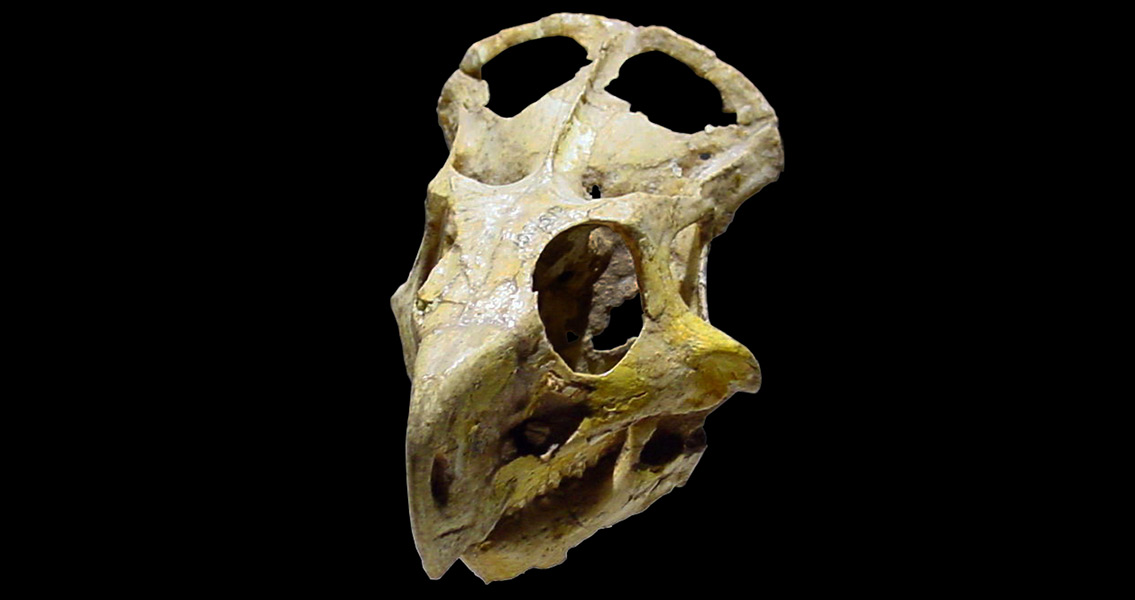<![CDATA[Structures such as horns and frills on dinosaurs were probably used for sexual display and to assert dominance, according to a study carried out by scientists at Queen Mary University of London (QMUL). Exactly why some dinosaurs had large ornamental structures on their heads has long been a mystery. The study, published in the journal Paleao-Electronica, is the first in which scientists have linked this distinct anatomical feature to sexual selection among dinosaurs. The basis of the research by the QMUL scientists was Protoceratops, a member of the Ceratopsian family of dinosaurs which included Triceratops. Protoceratops (the name translates to 'first horned dinosaur') had a bulky body measuring around two metres in length. Living in Asia during the Late Cretaceous period, the animal was prey to both raptors and tyrannosaurs. It was distinguished by a large, bony frill which extended from the back of the head over the neck. Disproportionate development of these frills as Protoceratops approached maturity suggests they might have been a way for males to show off their attributes to potential mates, or to help them assert their dominance in social interactions. The study shows that the frill was absent in juvenile Protoceratops, but suddenly increased in size when the animal reached adulthood. “Palaeontologists have long suspected that many of the strange features we see in dinosaurs were linked to sexual display and social dominance but this is very hard to show." said Dr David Hone, lecturer in Zoology from QMUL’s School of Biological and Chemical Sciences. "The growth pattern we see in Protoceratops matches that seen for signalling structures in numerous different living species and forms a coherent pattern from very young animals right through to large adults." Thirty seven Protoceratop specimens were analysed for the study, from four distinct class sizes: hatchling babies, young animals, near-adults, and adults. Measurements were taken for the specimen's frills, which were then compared with the dimensions of the skulls. "The results here provide strong evidence for the growth of the frill in Protoceratops andrewsi being greater than the overall growth of the animal by demonstrating positive allometry.” As well as changing in shape, the frill also changed in size, becoming proportionately wider as the dinosaur got older. This has been taken by the QMUL team as evidence that the frills were connected to sexual selection. As they explain in the study, although there are some exceptions in the animal kingdom where positive allometric traits are not connected to sexual selection, they are incredibly rare. “If a trait is shown to be positively allometric then, in the absence of a plausible alternative regarding its evolution, we can take this as evidence supporting a hypothesis of evolution via sexual selection or socio-sexual dominance signals.” Other explanations for the horns and frills on Ceratopsian dinosaurs exist. Some palaeontolgists have argued that the horns and frills were merely a means of defence against predators, while others have suggested that the ornamental bone structures were a means for the animals to identify other members of their herd. These explanations are not mutually exclusive, and it is possible that the structures had multiple functions. Meanwhile, the authors of the study argue that the findings provide further evidence of the importance of sexual selection in shaping biodiversity. “Biologists are increasingly realising that sexual selection is a massively important force in shaping biodiversity both now and in the past. Not only does sexual selection account for most of the stranger, prettier and more impressive features that we see in the animal kingdom, it also seems to play a part in determining how new species arise, and there is increasing evidence that it also has effects on extinction rates and on the ways by which animals are able to adapt to changing environments.” said Dr Rob Knell, Reader in Evolutionary Ecology, also from QMUL’s School of Biological and Chemical Sciences. Image courtesy of Wikimedia Commons user: Luis Miguel Bugallo Sánche]]>
Dinosaurs Used Horns and Frills For Sexual Display
